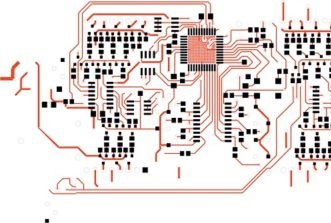This website uses cookies so that we can provide you with the best user experience possible. Cookie information is stored in your browser and performs functions such as recognising you when you return to our website and helping our team to understand which sections of the website you find most interesting and useful.
Compact comb lights the way for next-gen photonics
These devices act as rulers for measuring light, enabling breakthroughs in telecommunications, environmental monitoring, and even astrophysics
In the world of modern optics, frequency combs are invaluable tools. These devices act as rulers for measuring light, enabling breakthroughs in telecommunications, environmental monitoring, and even astrophysics. But building compact and efficient frequency combs has been a challenge—until now.
Electro-optic frequency combs, introduced in 1993, showed promise in generating optical combs through cascaded phase modulation but progress slowed down because of their high power demands and limited bandwidth. This led to the field being dominated by femtosecond lasers and Kerr soliton microcombs, which, while effective, require complex tuning and high power, limiting field-ready use.
But recent advances in thin-film electro-optic integrated photonic circuits have renewed interest, with materials like lithium niobate. Nonetheless, achieving broader bandwidth with lower power has remained a challenge, the intrinsic birefringence (splitting light beams) of the lithium niobate also sets a upper limit for the achievable bandwidth.
Scientists at EPFL, the Colorado School of Mines and the China Academy of Science, has now tackled this by combining microwave and optical circuit designs on the newly developed lithium tantalate platform, compared with lithium niobate, the lithium tantalate features 17 times lower intrinsic birefringence. Led by Professor Tobias J. Kippenberg, the researchers developed an electro-optic frequency comb generator that achieves an unprecedented 450 nm spectral coverage with over 2000 comb lines. The breakthrough expands the device’s bandwidth and reduces microwave power requirements almost 20-fold compared to previous designs.
The team introduced a “integrated triply resonant” architecture, where three interacting fields—two optical and one microwave—resonate in harmony. This was achieved using a novel co-designed system that integrates monolithic microwave circuits with photonic components. By embedding a distributed coplanar waveguide resonator on lithium tantalate photonics integrated circuits, the team significantly improved microwave confinement and energy efficiency … more at Eurekalert














